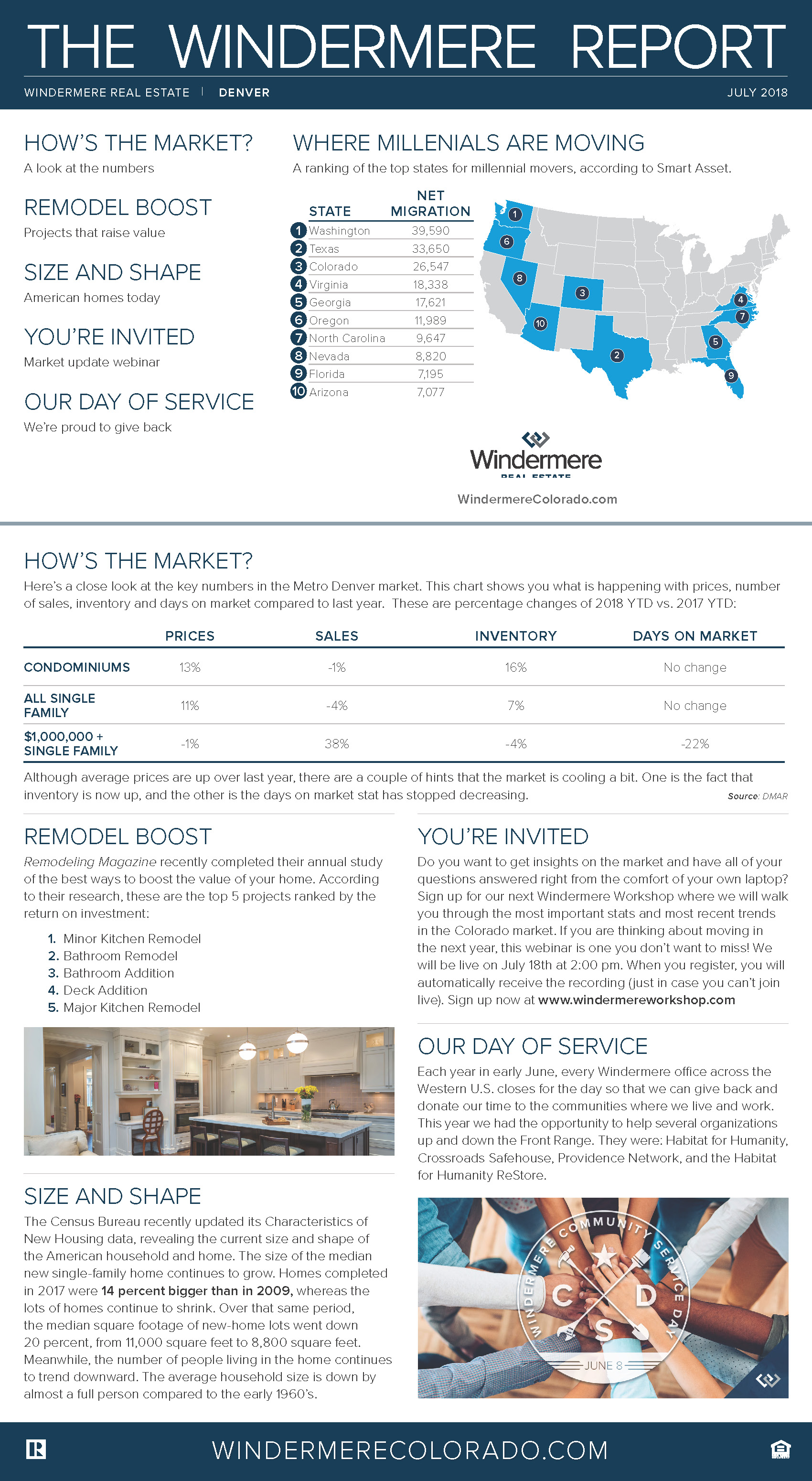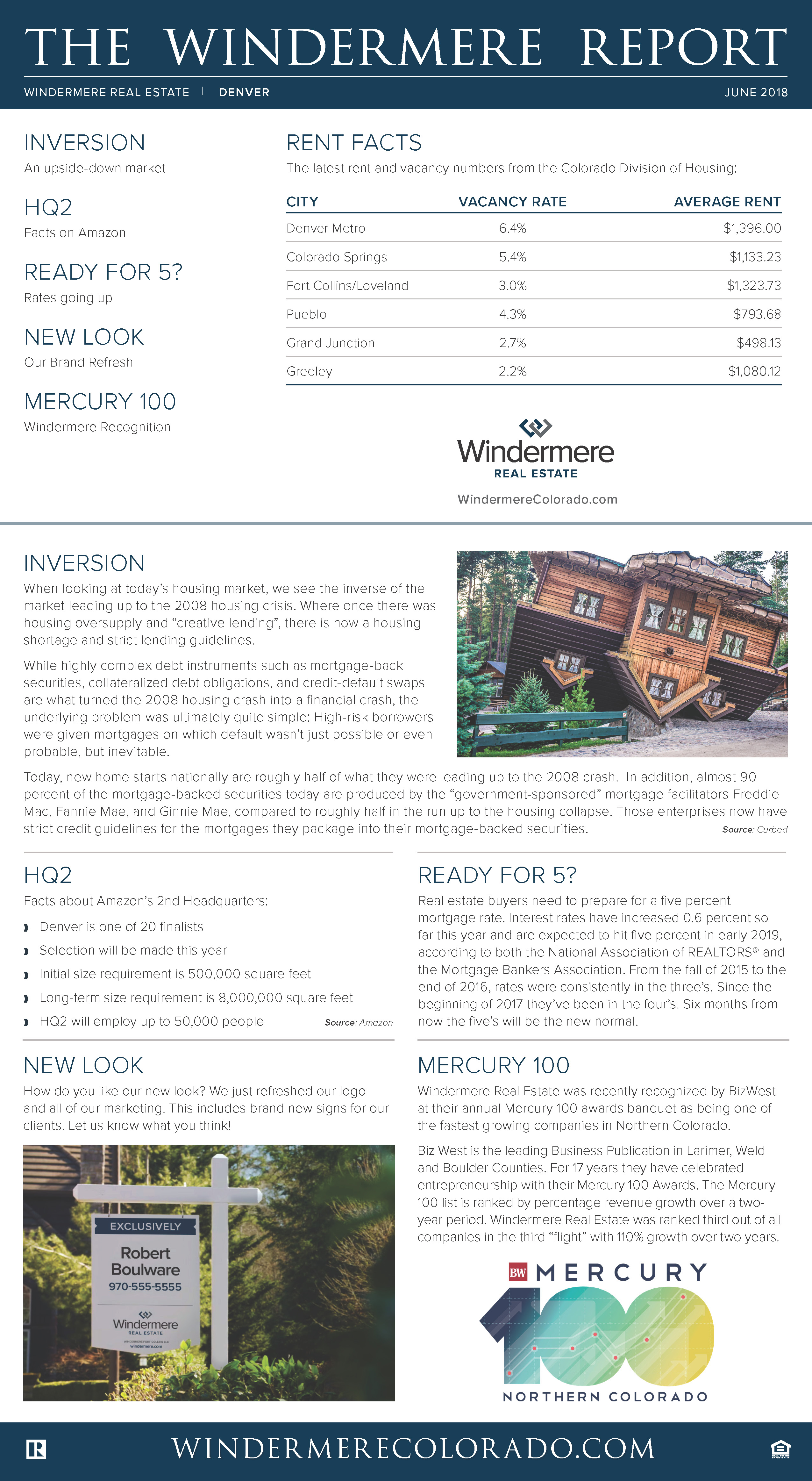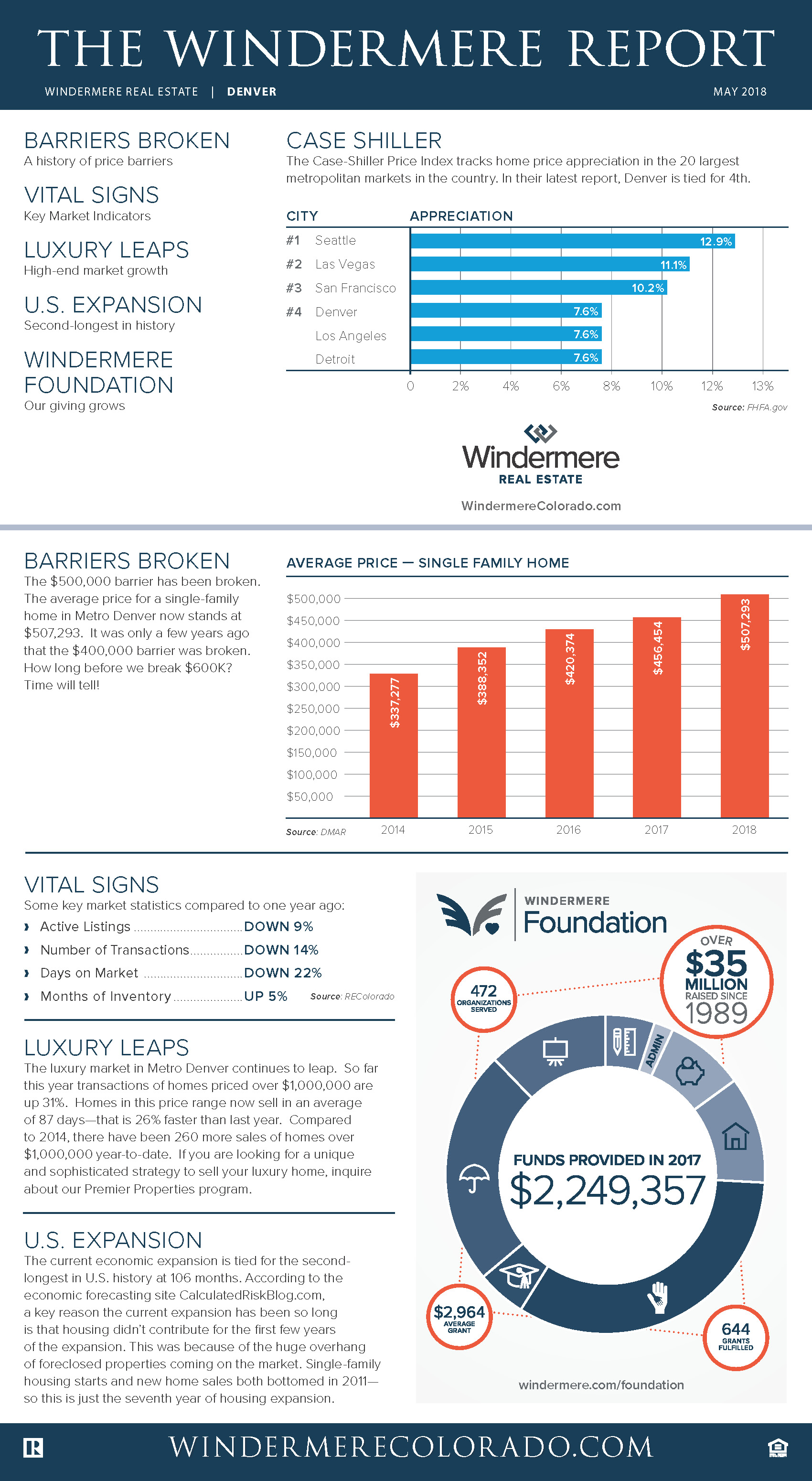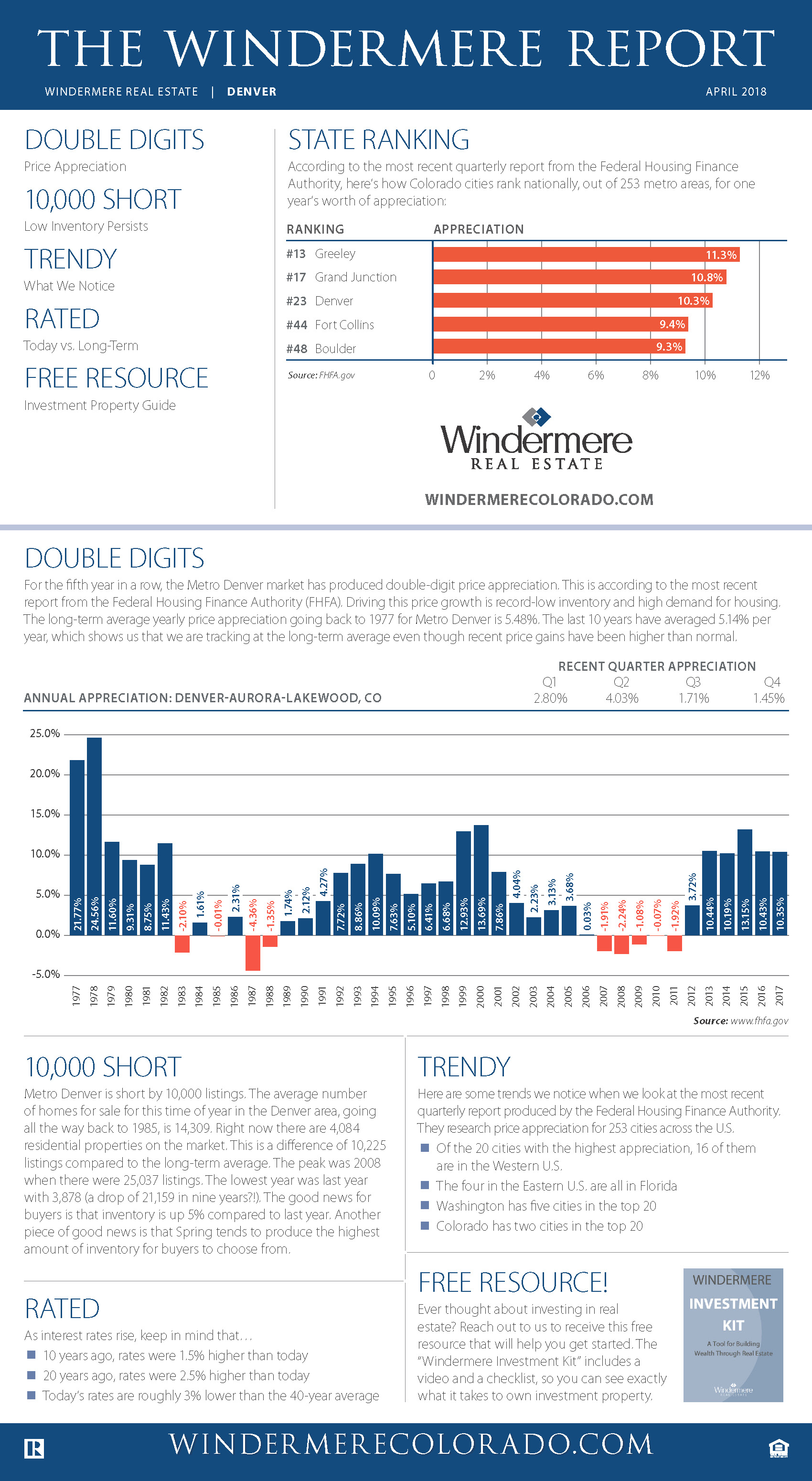The Gardner Report – Q2 2018


The following analysis of the Metro Denver & Northern Colorado real estate market (which now includes Clear Creek, Gilpin, and Park Counties) is provided by Windermere Real Estate Chief Economist Matthew Gardner. We hope that this information may assist you with making better-informed real estate decisions. For further information about the housing market in your area, please don’t hesitate to contact your Windermere agent.
ECONOMIC OVERVIEW
Colorado continues to see very strong job growth, adding 72,800 non-agricultural jobs over the past 12 months—an impressive increase of 2.7%. Through the first five months of 2018, the state added an average of 7,300 new jobs per month. I expect this growth to continue through the remainder of the year, resulting in about 80,000 new jobs in 2018.
In May, the state unemployment rate was 2.8%. This is slightly above the 2.6% we saw a year ago but still represents a remarkably low level. Unemployment remains either stable or is dropping in all the markets contained in this report, with the lowest reported rates in Fort Collins and Boulder, where just 2.2% of the labor force was actively looking for work. The highest unemployment rate was in Grand Junction, which came in at 3.1%.
HOME SALES ACTIVITY
- In the second quarter of 2018, 17,769 homes sold—a drop of 2.4% compared to the second quarter of 2017.
- Sales rose in 5 of the 11 counties contained in this report, with Gilpin County sales rising by an impressive 10.7% compared to second quarter of last year. There were also noticeable increases in Clear Creek and Weld Counties. Sales fell the most in Park County but, as this is a relatively small area, I see no great cause for concern at this time.
- Slowing sales activity is to be expected given the low levels of available homes for sale in many of the counties contained in this report. That said, we did see some significant increases in listing activity in Denver and Larimer Counties. This should translate into increasing sales through the summer months.
- The takeaway here is that sales growth is being hobbled by a general lack of homes for sale, and due to a drop in housing demand.

HOME PRICES

- With strong economic growth and a persistent lack of inventory, prices continue to trend higher. The average home price in the region rose
9.8% year-over-year to $479,943. - The smallest price gains in the region were in Park County, though the increase there was still a respectable 7%.
- Appreciation was strongest in Clear Creek and Gilpin Counties, where prices rose by 28.9% and 26%, respectively. All other counties in this report saw gains above the long-term average.
- Although there was some growth in listings, the ongoing imbalance between supply and demand persists, driving home prices higher.

DAYS ON MARKET
- The average number of days it took to sell a home remained at the same level as a year ago.
- The length of time it took to sell a home dropped in most markets contained in this report. Gilpin County saw a very significant jump in days on market, but this can be attributed to the fact that it is a very small area which makes it prone to severe swings.
- In the second quarter of 2018, it took an average of 24 days to sell a home. Of note is Adams County, where it took an average of only 10 days to sell a home.
- Housing demand remains very strong and all the markets in this report continue to be in dire need of additional inventory to satisfy demand.

CONCLUSIONS

This speedometer reflects the state of the region’s real estate market using housing inventory, price gains, home sales, interest rates, and larger economic factors.
For the second quarter of 2018, I have moved the needle very slightly towards buyers as a few counties actually saw inventories rise. However, while I expect to see listings increase in the coming months, for now, the housing market continues to heavily favor sellers.

Matthew Gardner is the Chief Economist for Windermere Real Estate, specializing in residential market analysis, commercial/industrial market analysis, financial analysis, and land use and regional economics. He is the former Principal of Gardner Economics, and has more than 30 years of professional experience both in the U.S. and U.K.
2018 Real Estate Forecast Event

Are we in a housing bubble? Is there a recession coming?
Learn the answers to those questions plus more at this fun, interactive, informative presentation full of valuable takeaways featuring Windermere Real Estate’s Chief Economist Matthew Gardner. Hear hyper-local stats and facts as well as national information about the real estate, employment and financial markets.
Reception to follow! Please stay after the presentation and join us for complimentary hors d’oeuvres and drinks.
We hope to see you there! Please click the image below to register:
Colorado Real Estate Update – 3rd Quarter 2017
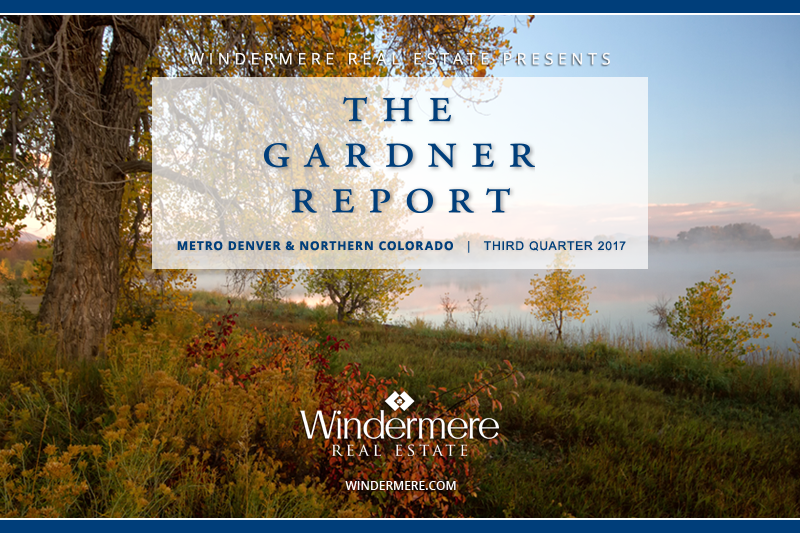
|
|||||||||||||||||||
|
|||||||||||||||||||
|
|||||||||||||||||||
|
Colorado Real Estate Update – 2nd Quarter 2017
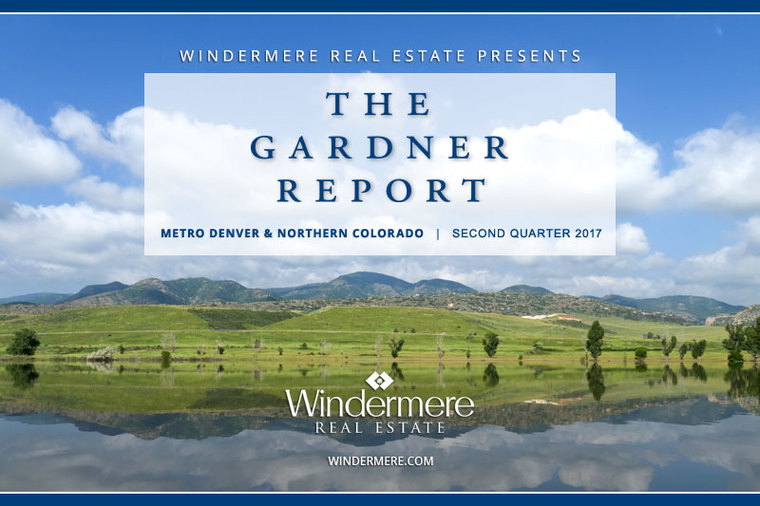

ECONOMIC OVERVIEW
Colorado added 62,000 new jobs over the past 12 months, an increase of 2.4% over this time last year. All of the metropolitan markets included in this report saw annual employment growth, with substantial growth in Boulder (4.7%) and Fort Collins (+4.1%), and more modest growth in Grand Junction (0.3%). In May, the unemployment rate in the state was 2.3%, matching the prior month and down 3.4% from a year ago. The lowest unemployment rate was in Fort Collins at just 2.0%. The highest rate was in Grand Junction, though it was still a relatively low 3.3%. It is reasonable to expect these markets will see above-average wage growth given the tight labor market.
HOME SALES ACTIVITY
- There were 17,581 home sales during the first quarter of 2017, a solid annual increase of 3.9% over the first quarter of 2016.
- Jefferson County saw sales grow at the fastest rate over the past 12 months, with a 9.4% increase. There was also an impressive increase in Douglas County (+6.3%). More modest sales growth was seen in Denver and Weld Counties.
- Even with the rise in sales, listing activity is still running at well below historic averages, with the total number of homes for sale in the second quarter 7.6% below a year ago.
- Sales growth continues to trend higher, but inventory levels remain well below where they need to be to satisfy demand.

HOME PRICE

- Due to solid demand, home prices continue to rise with average prices up by 8.5% year-over-year to an average across the region of $438,980.
- Boulder County saw slower appreciation in home values, but the trend is still positive.
- Appreciation was strongest in Denver and Weld Counties, where prices rose by 12.4% and 10.6% respectively.
- Economic growth is driving job growth, which is driving housing demand. Given the relative shortage of homes for sale, expect to see home prices continue to appreciate at above-average rates at least through the rest of the year.

DAYS ON MARKET
- The average number of days it took to sell a home dropped by three days when compared to the second quarter of 2016.
- Homes in all counties contained in this report took less than a month to sell. Adams County stood out as it took an average of only 11 days to sell a home.
- During the second quarter, it took an average of just 17 days to sell a home. This is down by a substantial 13 days compared to the first quarter of this year.
- The takeaway here is that demand remains robust as evidenced by the remarkably short amount of time that it is taking to sell a home.

CONCLUSIONS

This speedometer reflects the state of the region’s housing market using housing inventory, price gains, home sales, interest rates, and larger economic factors.
After the second quarter of 2017, I have moved the needle even farther in favor of sellers. Mortgage rates remain very competitive and, with the specter of lending standards easing a little, demand will remain robust, which will be reflected in rising home values.

Matthew Gardner is the Chief Economist for Windermere Real Estate, specializing in residential market analysis, commercial/industrial market analysis, financial analysis, and land use and regional economics. He is the former Principal of Gardner Economics, and has over 25 years of professional experience both in the U.S. and U.K.
Colorado Real Estate Market Update – 1st Quarter 2017
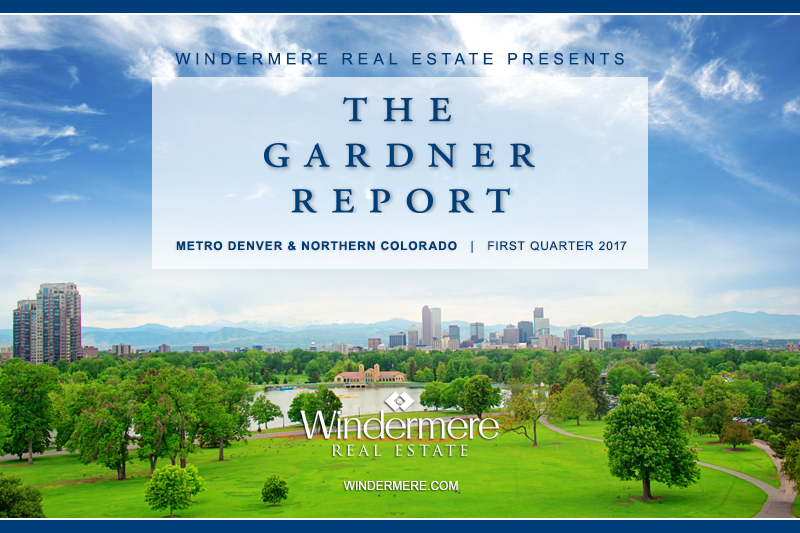
|
|
|
|
|
|
Two Years & Top 3% in Metro Denver Market

Windermere Real Estate, the largest regional brokerage in the Western U.S. is celebrating its second year in the Denver market this month. After just two years, the Seattle-based company now ranks in the top 3% of all real estate brokerage companies in the metropolitan area.
 While Windermere has been growing over the last two years, metro Denver homeowners have been benefitting from the robust growth in real estate prices. According to the latest report from the Federal Housing Finance Authority, Denver ranks 14th out of 258 metropolitan areas for home price appreciation with 10.14% growth over the last 12 months.
While Windermere has been growing over the last two years, metro Denver homeowners have been benefitting from the robust growth in real estate prices. According to the latest report from the Federal Housing Finance Authority, Denver ranks 14th out of 258 metropolitan areas for home price appreciation with 10.14% growth over the last 12 months.
This appreciation rate is nearly double the long-term average of 5.8%. Prices in metro Denver have been appreciating at double-digit rates for the last four years in a row. The average price of a single-family home now stands at $448,000. Just two years ago, when Windermere started in Metro Denver, the average price was $371,000.
“For four years now we have had the perfect storm to cause prices to increase at a rate that is nearly double the long-term average. Metro Denver is one of the fastest growing populations in the country, we have an incredibly healthy economy with high employment, interest rates that are roughly half of the long-term average, and the inventory of homes is at all-time lows,” said Eric Thompson president of Windermere Real Estate in Colorado.
There are only 2,918 single family homes currently for sale in Metro Denver, 7.8% lower than a year ago. “With tight supply and strong demand, we see expect very strong price appreciation for the foreseeable future,” said Thompson.
About Windermere Colorado:
Since its inception in 1972, Windermere Real Estate has grown to be a network of 300 offices with more than 6,000 agents by focusing on three basic principles: hire the best people, give them the best tools and create thriving communities. Windermere’s growth has allowed them to expand into the Colorado market led by Eric Thompson, President of Windermere Colorado.
 Facebook
Facebook
 Twitter
Twitter
 Pinterest
Pinterest
 Copy Link
Copy Link
